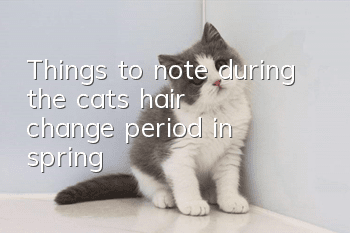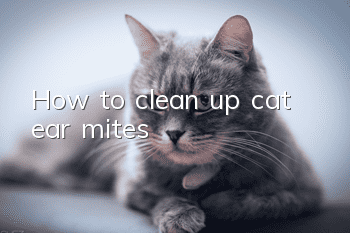How to choose a healthy cat?

Nowadays, we often see news photos of pets on the Internet. Those cute pets have simply amazed many netizens. Those cute and funny animals not only bring us joy, but perhaps more people are fascinated by them. , Beloved chose to raise one as well. The editor was so fascinated by their cuteness that I wanted to keep a cat. So how can you choose a healthy cat?
First, choose from offspring of good breeds, strong physiques, and beautiful bodies. Take another look at the kitten's growth status, whether it is lively, cute, smart, strong, has a good appetite, and has a shiny coat, etc. Do not choose the smallest cat in a litter (that is, a weak cat) because it has a weak constitution, slow growth, is prone to illness, and is difficult to feed.
Second, the signs of a healthy cat are:
1. Eyes are bright, no tears, no secretions, and no inflammation;
2. The ears are clean and erect, with little or no earwax and no other foreign matter;
3. The area around the mouth should be clean and dry, free of saliva and food, and the teeth should be solid, pink, and free of ulcers;
4. The coat is smooth, the skin is soft, there are no bald spots or lumps, and the skin is not red;
5. The anus and external genitalia should be clean and free of secretions, and there should be no fecal dirt on the nearby coat;
6. The body muscles are solid and developed, and there is no rash. Do not choose a kitten with a runny nose or tears.
Healthy cats, in a quiet state, respond sensitively to the owner's call or other sounds. After hearing the sound, their ears swing back and forth. Sick or deaf cats do not respond to sounds. When you have selected a kitten, you should try calling it to see if the cat responds. If the kitten is easily frightened or grins, carefully observe whether it is unwell, fearful of its new owner, or unable to adapt to the new environment.
Third, you must learn to identify the age of your cat. Under normal circumstances, cats begin to grow their deciduous teeth in the 2nd to 3rd week after birth, and in 2 to 3 months, all the deciduous teeth will grow in, and teeth will begin to change. By 6 months, all the permanent front teeth will grow in. After 1 year, the lower incisors begin to wear, after 5 years the canine teeth begin to wear, after 7 years the lower incisors grind into a round shape, and after 10 years or more, the upper collar incisors wear into a round shape. The age of a cat can also be roughly identified based on the growth and color changes of its fur. Six months after the cat is born, new hair will grow to indicate adulthood; after six or seven years, it will enter middle age, when white whiskers will grow on its mouth; in old age, white hair will grow on its head and back.
- How to train a cat not to scratch? Tips on cat home training!
- What causes cat moss? How cats get ringworm
- What causes cats to parkour?
- How big can a Norwegian forest cat grow?
- Can cats be bathed five days after vaccination?
- Can cats use air conditioners in the summer? Isn’t it a form of cruelty not to use air conditioners on cats?
- What's wrong with the kitten opening its mouth to pant and breathing rapidly?
- How to raise and train a blue cat?
- What should I do if my cat doesn’t sleep in the middle of the night and keeps tormenting me?
- What are the disadvantages of Ragdoll cats?



